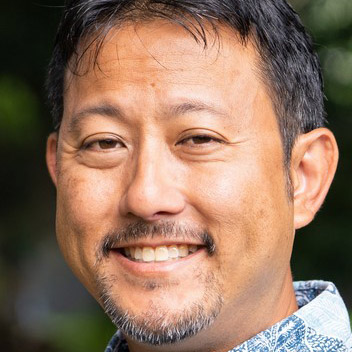At first glance, COVID-19 and race relations in Hawaii seem not to be closely related, but I want to make the case that they are, and that we still, as a state, have a long way to go on both fronts.
Since March, when stay-at-home and social distancing guidelines were put in place, the three-generation Inouye household has held some fascinating conversations surrounding Black Lives Matter, kneeling during the national anthem, and the different messaging on the backs of jerseys in the National Basketball Association. At times, the media has tied racial protest to the COVID-19 pandemic by showing social distancing (or the lack thereof) between participants. Other than that, the headlines appear to switch between the two topics on any given day. As local public health policy like the closure of parks or the reinstated interisland quarantine continues to impact our daily lives, I have been realizing how these, and other practices like it, affect different groups of people in different ways.
The first thought that comes to mind is the medical side of the story. Does race matter regarding COVID-19 positive cases/deaths? Yes, race matters because according to the Centers for Disease Control, non-Hispanic blacks make up 13% of the total U.S. population and yet they account for 25% of the COVID-19 related deaths[1].
Here in Hawaii, race definitely matters. Just the other day, Bruce Anderson (State Department of Health) reported that Pacific Islanders represent a disproportionate number of COVID-19 cases in the islands. The Honolulu Star-Advertiser reported that Pacific Islanders make up just 4% of the state population, but they represent an astounding 27% of the latest COVID-19 cases[2]. The CDC’s rationale is that ethnic minority groups are at increased risk from COVID-19 due to discrimination in healthcare, access to healthcare, occupation, housing, and other socio-economic factors like education and wealth gaps[3].
I’d say that is also the case here in Hawaii where Honolulu Mayor Kirk Caldwell told a story of Pacific Islander leaders admitting to him that they did not get tested because they didn’t have healthcare when there are city programs paying for testing at the local health centers. They didn’t know they could be tested for free.
Admittedly, it is difficult to recognize where we still fall short, being neck deep in Hawaii living, but again, it struck me as I was watching a TV commercial recruiting 2020 U.S. census takers that we are not the “melting pot” of the Pacific we often claim to be. The commercial presented a census taker walking door to door in a mask, and the narrator pleaded with viewers to open their doors because they were trained in COVID-19 safety procedures and had their best interests in mind. The census taker was in a well-manicured neighborhood. Everyone had quaint houses with large front yards, but this is not the typical setting for a census taker in Hawaii.
According to a former census consultant who worked for the U.S. House of Representatives oversight committee for the census, ethnic minority groups like Black and Latino households are less likely to self-respond[4]. Here in Hawaii, it might be Pacific Islander populations who live in public housing with three generations living in a one-bedroom residence. A census taker would most likely not be walking in Kahala or Kailua or Hawaii Kai. They would probably be going door to door in places like Kalihi or Waianae, where COVID clusters have been identified and case counts have exploded.
COVID-19 exposes the clear racial divides in housing, occupation, healthcare, and education here in Hawaii. It isn’t difficult to see why the federal government is having a particularly difficult time finding census takers.
The COVID-19 pandemic is a dangerous phenomenon which indirectly has exposed race relations across the U.S. While I may be personally disappointed that a park is closed since I cannot coach my soccer teams, the consequences are worse for Pacific Islander communities who might use parks in order to meet with other community members in a comparatively safe outdoor space. Frankly, rules like this leave few options for socially disadvantaged groups and force them to meet in tighter indoor spaces, since they lack the access others have to Wi-Fi-enabled meetings. Then when we hear of associated COVID-19 clusters, some blame them for not socially distancing or not testing. Unfortunately, groups like this lose either way.
Many in our local society have probably asked themselves, why is the mainland protesting what we in Hawaii have known about for so long? While to some extent this is true and we are better, anyone who believes that we are the gold standard is fooling themselves.

Dr. Todd Inouye has been an Assistant Professor of Management at the University of Hawaii at Hilo since 2019. Prior to that, he was at Niagara University since September 2016 after receiving his PhD in Business Administration from the Shidler College of Business at the University of Hawaii at Manoa. His research has appeared in Small Business Economics: An Entrepreneurship Journal, Global Strategy Journal, BRC Journal of Advances in Education, and the Decision Sciences Journal of Innovative Education.
[1] https://www.cdc.gov/nchs/nvss/vsrr/covid19/health_disparities.htm
[2] https://www.staradvertiser.com/2020/08/06/hawaii-news/surge-in-virus-cases-highlights-disparities-for-pacific-islanders/
[3] https://www.cdc.gov/coronavirus/2019-ncov/community/health-equity/race-ethnicity.html
[4] https://www.npr.org/2020/03/11/814603337/how-the-coronavirus-outbreak-may-impact-the-2020-census



